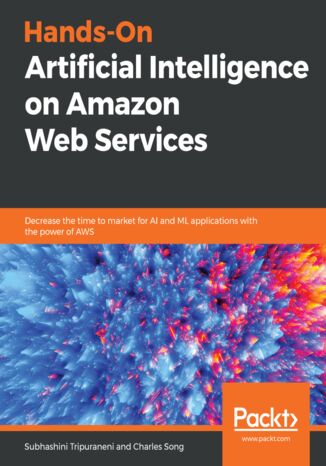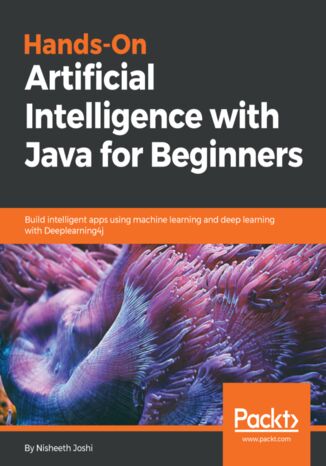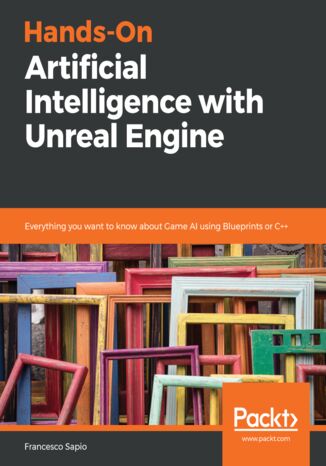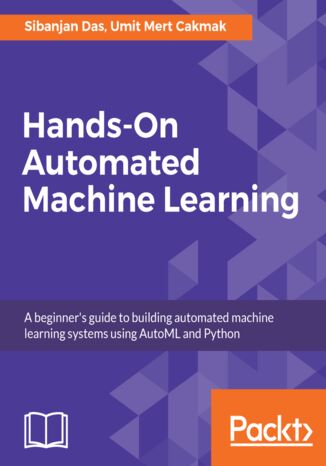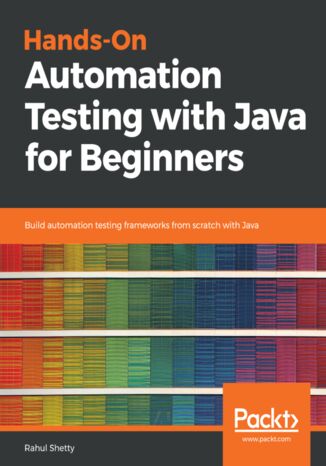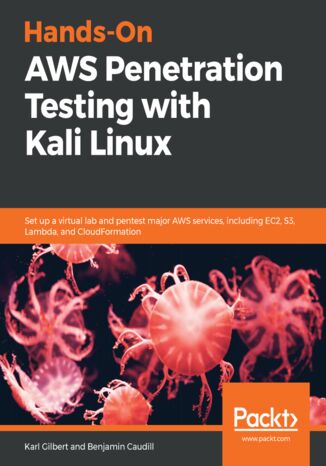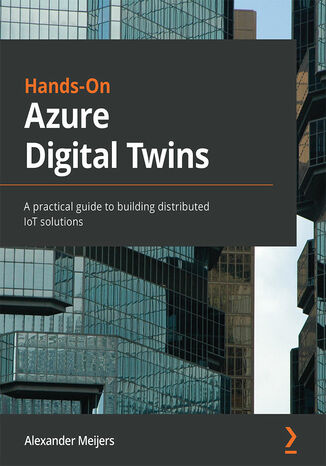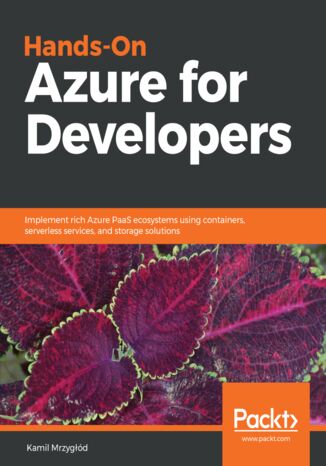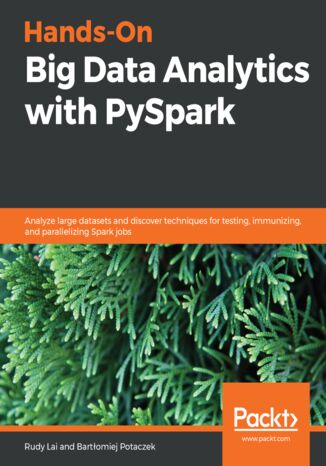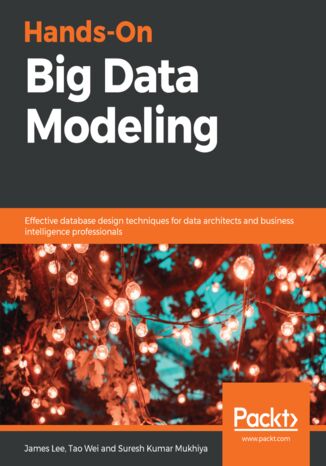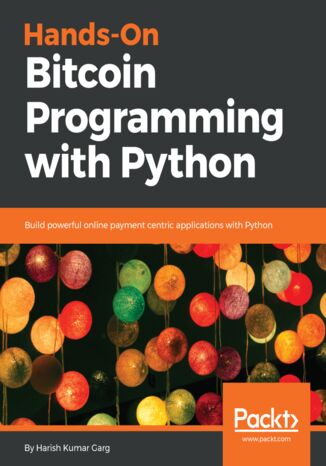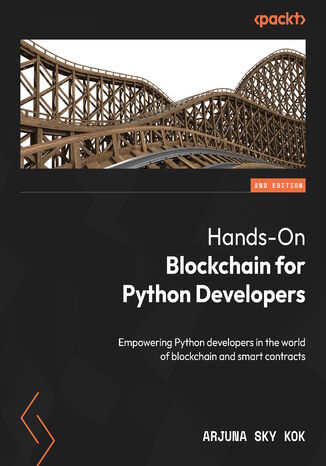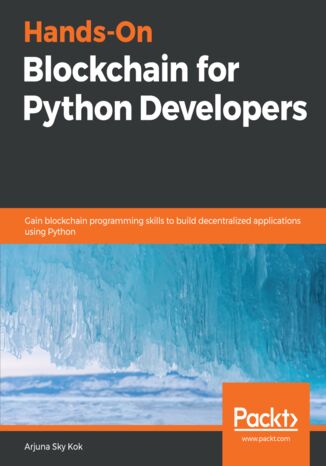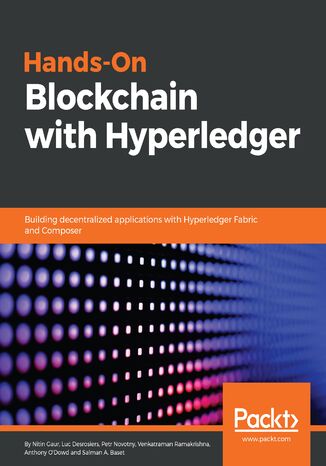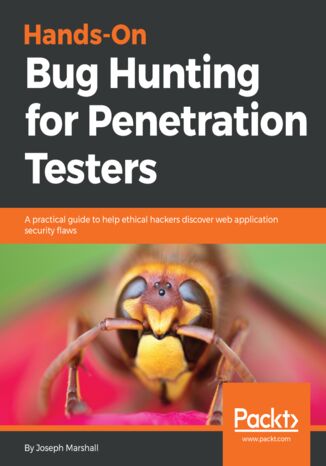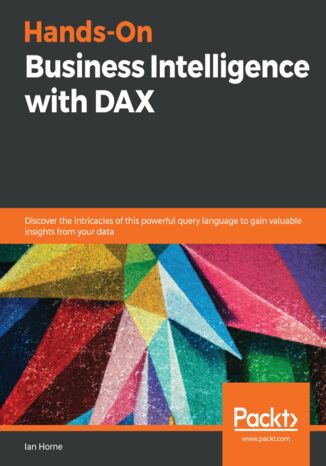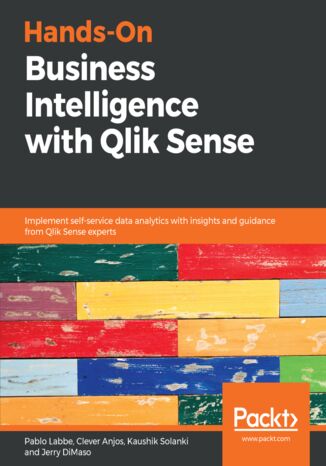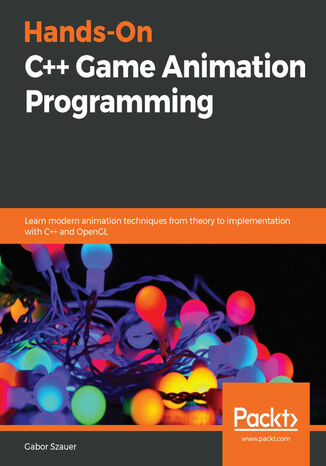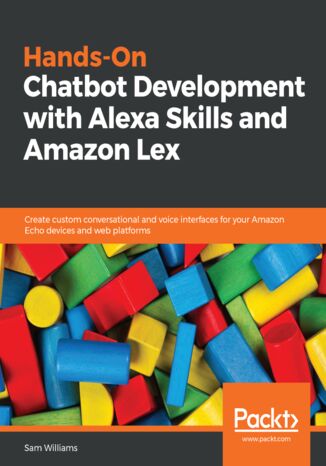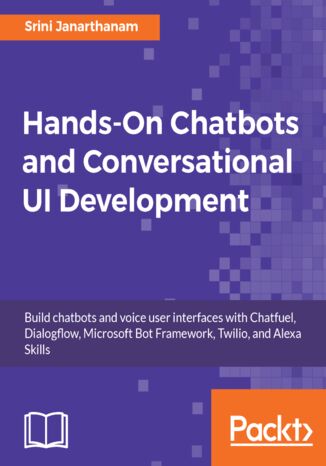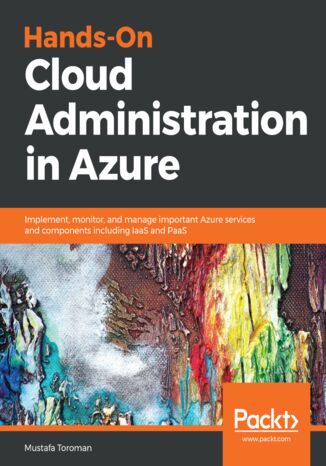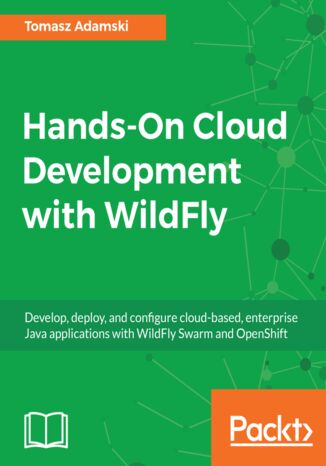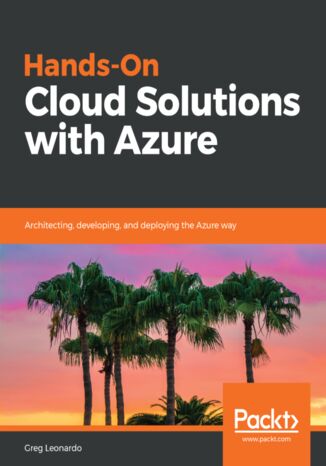Kategorien
-
- Bitcoin
- Geschäftsfrau
- Coaching
- Controlling
- E-Business
- Ökonomie
- Finanzen
- Börse und Investitionen
- Persönliche Kompetenzen
- Computer im Büro
- Kommunikation und Verhandlungen
- Kleines Unternehmen
- Marketing
- Motivation
- Multimedia-Training
- Immobilien
- Überzeugung und NLP
- Steuern
- Sozialpolitik
- Handbȕcher
- Präsentationen
- Führung
- Public Relation
- Berichte, Analysen
- Geheimnis
- Social Media
- Verkauf
- Start-up
- Ihre Karriere
- Management
- Projektmanagement
- Personal (HR)
-
- Architektura i wnętrza
- Sicherheit und Gesundheit am Arbeitsplatz
- Biznes i Ekonomia
- Haus und Garten
- E-Business
- Ekonomia i finanse
- Esoterik
- Finanzen
- Persönliche Finanzen
- Unternehmen
- Fotografie
- Informatik
- HR und Gehaltsabrechnung
- Frauen
- Computer, Excel
- Buchhaltung
- Kultur und Literatur
- Wissenschaftlich und akademisch
- Umweltschutz
- meinungsbildend
- Bildung
- Steuern
- Reisen
- Psychologie
- Religion
- Landwirtschaft
- Buch- und Pressemarkt
- Transport und Spedition
- Gesundheit und Schönheit
-
- Office-Programme
- Datenbank
- Bioinformatik
- IT Branche
- CAD/CAM
- Digital Lifestyle
- DTP
- Elektronik
- Digitale Fotografie
- Computergrafik
- Spiele
- Hacking
- Hardware
- IT w ekonomii
- Wissenschaftliche Pakete
- Schulbücher
- Computergrundlagen
- Programmierung
- Mobile-Programmierung
- Internet-Server
- Computernetzwerke
- Start-up
- Betriebssysteme
- Künstliche Inteligenz
- Technik für Kinder
- Webmaster
-
- Anthologien
- Ballade
- Biografien und Autobiografien
- Für Erwachsene
- Drama
- Tagebücher, Memoiren, Briefe
- Epos
- Essay
- Science Fiction
- Felietonys
- Fiktion
- Humor, Satire
- Andere
- Klassisch
- Krimi
- Sachbücher
- Belletristik
- Mity i legendy
- Nobelpreisträger
- Kurzgeschichten
- Gesellschaftlich
- Okultyzm i magia
- Erzählung
- Erinnerungen
- Reisen
- Gedicht
- Poesie
- Politik
- Populärwissenschaftlich
- Roman
- Historischer Roman
- Prosa
- Abenteuer
- Journalismus
- Reportage
- Romans i literatura obyczajowa
- Sensation
- Thriller, Horror
- Interviews und Erinnerungen
-
- Archäologie
- Bibliotekoznawstwo
- Filmwissenschaft
- Philologie
- Polnische Philologie
- Philosophie
- Finanse i bankowość
- Erdkunde
- Wirtschaft
- Handel. Weltwirtschaft
- Geschichte und Archäologie
- Kunst- und Architekturgeschichte
- Kulturwissenschaft
- Linguistik
- Literaturwissenschaft
- Logistik
- Mathematik
- Medizin
- Geisteswissenschaften
- Pädagogik
- Lehrmittel
- Populärwissenschaftlich
- Andere
- Psychologie
- Soziologie
- Theatrologie
- Teologie
- Theorien und Wirtschaftswissenschaften
- Transport i spedycja
- Sportunterricht
- Zarządzanie i marketing
-
- Sicherheit und Gesundheit am Arbeitsplatz
- Geschichte
- Verkehrsregeln. Führerschein
- Rechtswissenschaften
- Gesundheitswesen
- Allgemeines. Wissenskompendium
- akademische Bücher
- Andere
- Bau- und Wohnungsrecht
- Zivilrecht
- Finanzrecht
- Wirtschaftsrecht
- Wirtschafts- und Handelsrecht
- Strafrecht
- Strafrecht. Kriminelle Taten. Kriminologie
- Internationales Recht
- Internationales und ausländisches Recht
- Gesundheitsschutzgesetz
- Bildungsrecht
- Steuerrecht
- Arbeits- und Sozialversicherungsrecht
- Öffentliches, Verfassungs- und Verwaltungsrecht
- Familien- und Vormundschaftsrecht
- Agrarrecht
- Sozialrecht, Arbeitsrecht
- EU-Recht
- Industrie
- Agrar- und Umweltschutz
- Wörterbücher und Enzyklopädien
- Öffentliche Auftragsvergabe
- Management
-
- Afrika
- Alben
- Südamerika
- Mittel- und Nordamerika
- Australien, Neuseeland, Ozeanien
- Österreich
- Asien
- Balkan
- Naher Osten
- Bulgarien
- China
- Kroatien
- Tschechische Republik
- Dänemark
- Ägypten
- Estland
- Europa
- Frankreich
- Berge
- Griechenland
- Spanien
- Niederlande
- Island
- Litauen
- Lettland
- Mapy, Plany miast, Atlasy
- Miniführer
- Deutschland
- Norwegen
- Aktive Reisen
- Polen
- Portugal
- Andere
- Przewodniki po hotelach i restauracjach
- Russland
- Rumänien
- Slowakei
- Slowenien
- Schweiz
- Schweden
- Welt
- Türkei
- Ukraine
- Ungarn
- Großbritannien
- Italien
-
- Lebensphilosophien
- Kompetencje psychospołeczne
- zwischenmenschliche Kommunikation
- Mindfulness
- Allgemeines
- Überzeugung und NLP
- Akademische Psychologie
- Psychologie von Seele und Geist
- Arbeitspsychologie
- Relacje i związki
- Elternschafts- und Kinderpsychologie
- Problemlösung
- Intellektuelle Entwicklung
- Geheimnis
- Sexualität
- Verführung
- Aussehen ind Image
- Lebensphilosophien
-
- Bitcoin
- Geschäftsfrau
- Coaching
- Controlling
- E-Business
- Ökonomie
- Finanzen
- Börse und Investitionen
- Persönliche Kompetenzen
- Kommunikation und Verhandlungen
- Kleines Unternehmen
- Marketing
- Motivation
- Immobilien
- Überzeugung und NLP
- Steuern
- Sozialpolitik
- Handbȕcher
- Präsentationen
- Führung
- Public Relation
- Geheimnis
- Social Media
- Verkauf
- Start-up
- Ihre Karriere
- Management
- Projektmanagement
- Personal (HR)
-
- Anthologien
- Ballade
- Biografien und Autobiografien
- Für Erwachsene
- Drama
- Tagebücher, Memoiren, Briefe
- Epos
- Essay
- Science Fiction
- Felietonys
- Fiktion
- Humor, Satire
- Andere
- Klassisch
- Krimi
- Sachbücher
- Belletristik
- Mity i legendy
- Nobelpreisträger
- Kurzgeschichten
- Gesellschaftlich
- Okultyzm i magia
- Erzählung
- Erinnerungen
- Reisen
- Poesie
- Politik
- Populärwissenschaftlich
- Roman
- Historischer Roman
- Prosa
- Abenteuer
- Journalismus
- Reportage
- Romans i literatura obyczajowa
- Sensation
- Thriller, Horror
- Interviews und Erinnerungen
-
- Archäologie
- Philosophie
- Wirtschaft
- Handel. Weltwirtschaft
- Geschichte und Archäologie
- Kunst- und Architekturgeschichte
- Kulturwissenschaft
- Literaturwissenschaft
- Mathematik
- Medizin
- Geisteswissenschaften
- Pädagogik
- Lehrmittel
- Populärwissenschaftlich
- Andere
- Psychologie
- Soziologie
- Teologie
- Zarządzanie i marketing
-
- Lebensphilosophien
- zwischenmenschliche Kommunikation
- Mindfulness
- Allgemeines
- Überzeugung und NLP
- Akademische Psychologie
- Psychologie von Seele und Geist
- Arbeitspsychologie
- Relacje i związki
- Elternschafts- und Kinderpsychologie
- Problemlösung
- Intellektuelle Entwicklung
- Geheimnis
- Sexualität
- Verführung
- Aussehen ind Image
- Lebensphilosophien
Subhashini Tripuraneni, Charles Song
From data wrangling through to translating text, you can accomplish this and more with the artificial intelligence and machine learning services available on AWS.With this book, you’ll work through hands-on exercises and learn to use these services to solve real-world problems. You’ll even design, develop, monitor, and maintain machine and deep learning models on AWS.The book starts with an introduction to AI and its applications in different industries, along with an overview of AWS artificial intelligence and machine learning services. You’ll then get to grips with detecting and translating text with Amazon Rekognition and Amazon Translate. The book will assist you in performing speech-to-text with Amazon Transcribe and Amazon Polly. Later, you’ll discover the use of Amazon Comprehend for extracting information from text, and Amazon Lex for building voice chatbots. You will also understand the key capabilities of Amazon SageMaker such as wrangling big data, discovering topics in text collections, and classifying images. Finally, you’ll cover sales forecasting with deep learning and autoregression, before exploring the importance of a feedback loop in machine learning.By the end of this book, you will have the skills you need to implement AI in AWS through hands-on exercises that cover all aspects of the ML model life cycle.
Artificial intelligence (AI) is increasingly in demand as well as relevant in the modern world, where everything is driven by technology and data. AI can be used for automating systems or processes to carry out complex tasks and functions in order to achieve optimal performance and productivity.Hands-On Artificial Intelligence with Java for Beginners begins by introducing you to AI concepts and algorithms. You will learn about various Java-based libraries and frameworks that can be used in implementing AI to build smart applications. In addition to this, the book teaches you how to implement easy to complex AI tasks, such as genetic programming, heuristic searches, reinforcement learning, neural networks, and segmentation, all with a practical approach.By the end of this book, you will not only have a solid grasp of AI concepts, but you'll also be able to build your own smart applications for multiple domains.
Learning how to apply artificial intelligence ( AI ) is crucial and can take the fun factor to the next level, whether you're developing a traditional, educational, or any other kind of game. If you want to use AI to extend the life of your games and make them challenging and more interesting, this book is for you.The book starts by breaking down AI into simple concepts to get a fundamental understanding of it. Using a variety of examples, you will work through actual implementations designed to highlight key concepts and features related to game AI in UE4. You will learn to work through the built-in AI framework in order to build believable characters for every game genre (including RPG, Strategic, Platform, FPS, Simulation, Arcade, and Educational). You will learn to configure the Navigation, Environmental Querying, and Perception systems for your AI agents and couple these with Behavior Trees, all accompanied with practical examples. You will also explore how the engine handles dynamic crowds. In the concluding chapters, you will learn how to profile, visualize, and debug your AI systems to correct the AI logic and increase performance.By the end of the book, your AI knowledge of the built-in AI system in Unreal will be deep and comprehensive, allowing you to build powerful AI agents within your projects.
Sibanjan Das, Umit Mert Cakmak
AutoML is designed to automate parts of Machine Learning. Readily available AutoML tools are making data science practitioners’ work easy and are received well in the advanced analytics community. Automated Machine Learning covers the necessary foundation needed to create automated machine learning modules and helps you get up to speed with them in the most practical way possible. In this book, you’ll learn how to automate different tasks in the machine learning pipeline such as data preprocessing, feature selection, model training, model optimization, and much more. In addition to this, it demonstrates how you can use the available automation libraries, such as auto-sklearn and MLBox, and create and extend your own custom AutoML components for Machine Learning. By the end of this book, you will have a clearer understanding of the different aspects of automated Machine Learning, and you’ll be able to incorporate automation tasks using practical datasets. You can leverage your learning from this book to implement Machine Learning in your projects and get a step closer to winning various machine learning competitions.
Java is one of the most commonly-used software languages by programmers and developers. Are you from a non-technical background and looking to master Java for your automation needs? Then Hands-On Automation Testing with Java for Beginners is for you.This book provides you with efficient techniques to effectively handle Java-related automation projects. You will learn how to handle strings and their functions in Java. As you make your way through the book, you will get to grips with classes and objects, along with their uses. In the concluding chapters, you will learn about the importance of inheritance and exceptions with practical examples. By the end of this book, you will have gained comprehensive knowledge of Java.
Karl Gilbert, Benjamin Caudill
The cloud is taking over the IT industry. Any organization housing a large amount of data or a large infrastructure has started moving cloud-ward — and AWS rules the roost when it comes to cloud service providers, with its closest competitor having less than half of its market share. This highlights the importance of security on the cloud, especially on AWS. While a lot has been said (and written) about how cloud environments can be secured, performing external security assessments in the form of pentests on AWS is still seen as a dark art. This book aims to help pentesters as well as seasoned system administrators with a hands-on approach to pentesting the various cloud services provided by Amazon through AWS using Kali Linux. To make things easier for novice pentesters, the book focuses on building a practice lab and refining penetration testing with Kali Linux on the cloud. This is helpful not only for beginners but also for pentesters who want to set up a pentesting environment in their private cloud, using Kali Linux to perform a white-box assessment of their own cloud resources. Besides this, the book covers a large variety of AWS services that are often overlooked during a pentest — from serverless infrastructure to automated deployment pipelines. By the end of this book, you will be able to identify possible vulnerable areas efficiently and secure your AWS cloud environment.
Hands-On Azure Digital Twins. A practical guide to building distributed IoT solutions
In today’s world, clients are using more and more IoT sensors to monitor their business processes and assets. Think about collecting information such as pressure in an engine, the temperature, or a light switch being turned on or off in a room. The data collected can be used to create smart solutions for predicting future trends, creating simulations, and drawing insights using visualizations. This makes it beneficial for organizations to make digital twins, which are digital replicas of the real environment, to support these smart solutions.This book will help you understand the concept of digital twins and how it can be implemented using an Azure service called Azure Digital Twins. Starting with the requirements and installation of the Azure Digital Twins service, the book will explain the definition language used for modeling digital twins. From there, you'll go through each step of building digital twins using Azure Digital Twins and learn about the different SDKs and APIs and how to use them with several Azure services. Finally, you'll learn how digital twins can be used in practice with the help of several real-world scenarios.By the end of this book, you'll be confident in building and designing digital twins and integrating them with various Azure services.
Microsoft Azure is one of the fastest growing public cloud service providers in the market currently, and also holds the second highest market share after AWS. Azure has a sophisticated set of services that will help you build fault-tolerant and scalable cloud-based applications.Hands-On Azure for Developers will take you on a journey through multiple PaaS services available in Azure, including App Services, Functions, and Service Fabric, and explain in detail how to build a complete and reliable system with ease. You will learn about how to maximize your skills when building cloud-based solutions leveraging different SQL/NoSQL databases, serverless and messaging components, and even search engines such as Azure Search. In the concluding chapters, this book covers more advanced scenarios such as scalability best practices, serving static content with Azure CDN, and distributing loads with Azure Traffic Manager.By the end of the book, you will be able to build modern applications on the Azure cloud using the most popular and promising technologies, which will help make your solutions reliable, stable, and efficient.
James Cross, Rudy Lai, Bartłomiej Potaczek
Apache Spark is an open source parallel-processing framework that has been around for quite some time now. One of the many uses of Apache Spark is for data analytics applications across clustered computers. In this book, you will not only learn how to use Spark and the Python API to create high-performance analytics with big data, but also discover techniques for testing, immunizing, and parallelizing Spark jobs.You will learn how to source data from all popular data hosting platforms, including HDFS, Hive, JSON, and S3, and deal with large datasets with PySpark to gain practical big data experience. This book will help you work on prototypes on local machines and subsequently go on to handle messy data in production and at scale. This book covers installing and setting up PySpark, RDD operations, big data cleaning and wrangling, and aggregating and summarizing data into useful reports. You will also learn how to implement some practical and proven techniques to improve certain aspects of programming and administration in Apache Spark.By the end of the book, you will be able to build big data analytical solutions using the various PySpark offerings and also optimize them effectively.
James Lee, Tao Wei, Suresh Kumar Mukhiya
Modeling and managing data is a central focus of all big data projects. In fact, a database is considered to be effective only if you have a logical and sophisticated data model. This book will help you develop practical skills in modeling your own big data projects and improve the performance of analytical queries for your specific business requirements.To start with, you’ll get a quick introduction to big data and understand the different data modeling and data management platforms for big data. Then you’ll work with structured and semi-structured data with the help of real-life examples. Once you’ve got to grips with the basics, you’ll use the SQL Developer Data Modeler to create your own data models containing different file types such as CSV, XML, and JSON. You’ll also learn to create graph data models and explore data modeling with streaming data using real-world datasets.By the end of this book, you’ll be able to design and develop efficient data models for varying data sizes easily and efficiently.
Bitcoin is a cryptocurrency that’s changing the face of online payments. Hands-On Bitcoin Programming with Python teaches you to build software applications for mining and creating Bitcoins using Python.This book starts with the basics of both Bitcoin and blockchain and gives you an overview of these inherent concepts by showing you how to build Bitcoin-driven applications with Python. Packed with clear instructions and practical examples, you will learn to understand simple Python coding examples that work with this cryptocurrency.By the end of the book, you’ll be able to mine Bitcoins, accept Bitcoin payments on the app, and work with the basics of blockchain technology to create simply distributed ledgers.
We are living in the age of decentralized fi nance and NFTs. People swap tokens on Uniswap, borrow assets from Aave, send payments with stablecoins, trade art NFTs on OpenSea, and more. To build applications of this kind, you need to know how to write smart contracts.This comprehensive guide will help you explore all the features of Vyper, a programming language designed to write smart contracts. You’ll also explore the web3.py library. As you progress, you’ll learn how to connect to smart contracts, read values, and create transactions. To make sure your foundational knowledge is strong enough, the book guides you through Ape Framework, which can help you create decentralized exchanges, NFT marketplaces, voting applications, and more. Each project provides invaluable insights and hands-on experience, equipping you with the skills you need to build real-world blockchain solutions.By the end of this book, you’ll be well versed with writing common Web3 applications such as a decentralized exchange, an NFT marketplace, a voting application, and more.
Blockchain is seen as the main technological solution that works as a public ledger for all cryptocurrency transactions. This book serves as a practical guide to developing a full-fledged decentralized application with Python to interact with the various building blocks of blockchain applications.Hands-On Blockchain for Python Developers starts by demonstrating how blockchain technology and cryptocurrency hashing works. You will understand the fundamentals and benefits of smart contracts such as censorship resistance and transaction accuracy. As you steadily progress, you'll go on to build smart contracts using Vyper, which has a similar syntax to Python. This experience will further help you unravel the other benefits of smart contracts, including reliable storage and backup, and efficiency. You'll also use web3.py to interact with smart contracts and leverage the power of both the web3.py and Populus framework to build decentralized applications that offer security and seamless integration with cryptocurrencies. As you explore later chapters, you'll learn how to create your own token on top of Ethereum and build a cryptocurrency wallet graphical user interface (GUI) that can handle Ethereum and Ethereum Request for Comments (ERC-20) tokens using the PySide2 library. This will enable users to seamlessly store, send, and receive digital money. Toward the end, you'll implement InterPlanetary File System (IPFS) technology in your decentralized application to provide a peer-to-peer filesystem that can store and expose media.By the end of this book, you'll be well-versed in blockchain programming and be able to build end-to-end decentralized applications on a range of domains using Python.
Nitin Gaur, Luc Desrosiers, Venkatraman Ramakrishna, Petr Novotny, ...
Blockchain and Hyperledger technologies are hot topics today. Hyperledger Fabric and Hyperledger Composer are open source projects that help organizations create private, permissioned blockchain networks. These find application in finance, banking, supply chain, and IoT among several other sectors. This book will be an easy reference to explore and build blockchain networks using Hyperledger technologies.The book starts by outlining the evolution of blockchain, including an overview of relevant blockchain technologies. You will learn how to configure Hyperledger Fabric and become familiar with its architectural components. Using these components, you will learn to build private blockchain networks, along with the applications that connect to them. Starting from principles first, you’ll learn to design and launch a network, implement smart contracts in chaincode and much more. By the end of this book, you will be able to build and deploy your own decentralized applications, handling the key pain points encountered in the blockchain life cycle.
Bug bounties have quickly become a critical part of the security economy. This book shows you how technical professionals with an interest in security can begin productively—and profitably—participating in bug bounty programs.You will learn about SQli, NoSQLi, XSS, XXE, and other forms of code injection. You’ll see how to create CSRF PoC HTML snippets, how to discover hidden content (and what to do with it once it’s found), and how to create the tools for automated pentesting work?ows.Then, you’ll format all of this information within the context of a bug report that will have the greatest chance of earning you cash. With detailed walkthroughs that cover discovering, testing, and reporting vulnerabilities, this book is ideal for aspiring security professionals. You should come away from this work with the skills you need to not only find the bugs you're looking for, but also the best bug bounty programs to participate in, and how to grow your skills moving forward in freelance security research.
Data Analysis Expressions (DAX) is known for its ability to increase efficiency by extracting new information from data that is already present in your model. With this book, you’ll learn to use DAX’s functionality and flexibility in the BI and data analytics domains.You’ll start by learning the basics of DAX, along with understanding the importance of good data models, and how to write efficient DAX formulas by using variables and formatting styles. You’ll then explore how DAX queries work with the help of examples. The book will guide you through optimizing the BI workflow by writing powerful DAX queries. Next, you’ll learn to manipulate and load data of varying complexity within Microsoft products such as Power BI, SQL Server, and Excel Power Pivot. You’ll then discover how to build and extend your data models to gain additional insights, before covering progressive DAX syntax and functions to understand complex relationships in DAX. Later, you’ll focus on important DAX functions, specifically those related to tables, date and time, filtering, and statistics. Finally, you’ll delve into advanced topics such as how the formula and storage engines work to optimize queries.By the end of this book, you’ll have gained hands-on experience in employing DAX to enhance your data models by extracting new information and gaining deeper insights.
Pablo Labbe, Clever Anjos, Kaushik Solanki, Jerry DiMaso
Qlik Sense allows you to explore simple-to-complex data to reveal hidden insights and data relationships to make business-driven decisions.Hands-On Business Intelligence with Qlik Sense begins by helping you get to grips with underlying Qlik concepts and gives you an overview of all Qlik Sense’s features. You will learn advanced modeling techniques and learn how to analyze the data loaded using a variety of visualization objects. You’ll also be trained on how to share apps through Qlik Sense Enterprise and Qlik Sense Cloud and how to perform aggregation with AGGR. As you progress through the chapters, you’ll explore the stories feature to create data-driven presentations and update an existing story. This book will guide you through the GeoAnalytics feature with the geo-mapping object and GeoAnalytics connector. Furthermore, you’ll learn about the self-service analytics features and perform data forecasting using advanced analytics. Lastly, you’ll deploy Qlik Sense apps for mobile and tablet. By the end of this book, you will be well-equipped to run successful business intelligence applications using Qlik Sense's functionality, data modeling techniques, and visualization best practices.
Animation is one of the most important parts of any game. Modern animation systems work directly with track-driven animation and provide support for advanced techniques such as inverse kinematics (IK), blend trees, and dual quaternion skinning.This book will walk you through everything you need to get an optimized, production-ready animation system up and running, and contains all the code required to build the animation system. You’ll start by learning the basic principles, and then delve into the core topics of animation programming by building a curve-based skinned animation system. You’ll implement different skinning techniques and explore advanced animation topics such as IK, animation blending, dual quaternion skinning, and crowd rendering. The animation system you will build following this book can be easily integrated into your next game development project. The book is intended to be read from start to finish, although each chapter is self-contained and can be read independently as well.By the end of this book, you’ll have implemented a modern animation system and got to grips with optimization concepts and advanced animation techniques.
Have you ever wondered how Alexa apps are made, how voice-enabled technologies work, or how chatbots function? And why tech giants such as Amazon and Google are investing in voice technologies? A better question is: why should I start developing on these platforms? Hands-On Chatbot Development with Alexa Skills and Amazon Lex covers all features of the Alexa Skills kit with real-world examples that help you develop skills to integrate Echo and chatbots into Facebook, Slack, and Twilio with the Amazon Lex platform.The book starts with teaching you how to set up your local environment and AWS CLI so that you can automate the process of uploading AWS Lambda from your local machine. You will then learn to develop Alexa Skills and Lex chatbots using Lambda functions to control functionality. Once you’ve come to grips with this, you will learn to create increasingly complex chatbots, integrate Amazon S3, and change the way Alexa talks to the user. In the concluding chapters, we shift our focus to Amazon Lex and messaging chatbots. We will explore Alexa, learn about DynamoDB databases, and add cards to user conversations.By the end of this book, you will have explored a full set of technologies that will enable you to create your own voice and messaging chatbots using Amazon.
Conversation as an interface is the best way for machines to interact with us using the universally accepted human tool that is language. Chatbots and voice user interfaces are two flavors of conversational UIs. Chatbots are real-time, data-driven answer engines that talk in natural language and are context-aware. Voice user interfaces are driven by voice and can understand and respond to users using speech. This book covers both types of conversational UIs by leveraging APIs from multiple platforms. We'll take a project-based approach to understand how these UIs are built and the best use cases for deploying them. We'll start by building a simple messaging bot from the Facebook Messenger API to understand the basics of bot building. Then we move on to creating a Task model that can perform complex tasks such as ordering and planning events with the newly-acquired-by-Google Dialogflow and Microsoft Bot framework. We then turn to voice-enabled UIs that are capable of interacting with users using speech with Amazon Alexa and Google Home. By the end of the book, you will have created your own line of chatbots and voice UIs for multiple leading platforms.
Azure continues to dominate the public cloud market and grow rapidly thanks to a number of recent innovations. Azure's wide range of services and support has led to a large number of customers switching to Azure cloud.Hands-On Cloud Administration in Azure starts with the basics of Azure cloud fundamentals and key concepts of the cloud computing ecosystem and services. Then, you will gradually get acquainted with core services provided by Azure, including Azure VNet, types and assignments of IP addresses, and network security groups. You will also work on creating and administering Azure Virtual Machines, types of virtual machines (VMs), and design VM solutions based on computing workloads. As you make your way through the chapters, you will explore Azure App Service, discover how to host your web apps in Azure, and monitor and troubleshoot them. In the concluding chapters, you will learn more complex and abstract services, such as Azure Storage, Azure Backup, and Azure Site Recovery. You will also get to grips with Azure SQL Databases and the SQL on Azure VM concept.By the end of this book, you will have obtained practical experience of working with Azure services and Azure administration, along with maintaining, monitoring, and securing your Azure resources.
The book starts by introducing you to WildFly Swarm—a tool that allows you to create runnable microservices from Java EE components. You’ll learn the basics of Swarm operation—creating microservices containing only the parts of enterprise runtime needed in a specific case. Later, you’ll learn how to configure and test those services.In order to deploy our services in the cloud, we’ll use OpenShift. You’ll get to know basic information on its architecture, features, and relationship to Docker and Kubernetes. Later, you’ll learn how to deploy and configure your services to run in the OpenShift cloud.In the last part of the book, you’ll see how to make your application production-ready. You’ll find out how to configure continuous integration for your services using Jenkins, make your application resistant to network failures using Hystrix, and how to secure them using Keycloak. By the end of the book, you’ll have a functional example application and will have practical knowledge of Java EE cloud development that can be used as a reference in your other projects.
Hands-On Cloud Solutions with Azure. Architecting, developing, and deploying the Azure way
Azure provides cloud-based solutions to support your business demands. Building and running solutions on Azure will help your business maximize the return on investment and minimize the total cost of ownership.Hands-On Cloud Solutions with Azure focuses on addressing the architectural decisions that usually arise when you design or migrate a solution to Microsoft Azure. You will start by designing the building blocks of infrastructure solution on Azure, such as Azure compute, storage, and networking, followed by exploring the database options it offers. You will get to grips with designing scalable web and mobile solutions and understand where to host your Active Directory and Identity Solution. Moving on, you’ll learn how to extend DevOps to Azure.You will also beneft from some exciting services that enable extremely smooth operations and streamlined DevOps between on-premises and cloud. The book will help you to design a secure environment for your solution, on both the Cloud and hybrid. Toward the end, you’ll see how to manage and monitor cloud and hybrid solutions.By the end of this book, you will be armed with all the tools and knowledge you need to properly plan and design your solutions on Azure, whether it’s for a brand new project or migration project.
Francesco Marchioni, Mark Little
Quarkus is a new Kubernetes-native framework that allows Java developers to combine the power of containers, microservices, and cloud-native to build reliable applications. The book is a development guide that will teach you how to build Java-native applications using Quarkus and GraalVM.We start by learning about the basic concepts of a cloud-native application and its advantages over standard enterprise applications. Then we will quickly move on to application development, by installing the tooling required to build our first application on Quarkus. Next, we’ll learn how to create a container-native image of our application and execute it in a Platform-as-a-Service environment such as Minishift. Later, we will build a complete real-world application that will use REST and the Contexts and Dependency injection stack with a web frontend. We will also learn how to add database persistence to our application using PostgreSQL. We will learn how to work with various APIs available to?Quarkus?such as Camel, Eclipse MicroProfile, and Spring DI. Towards the end, we will learn advanced development techniques such as securing applications, application configuration, and working with non-blocking programming models using Vert.x.By the end of this book, you will be proficient with all the components of Quarkus and develop-blazing fast applications leveraging modern technology infrastructure.

